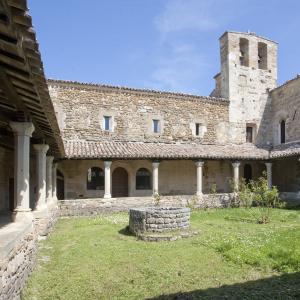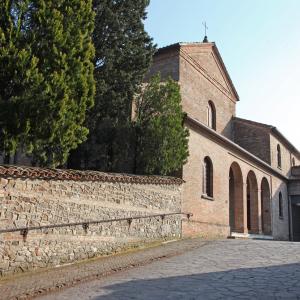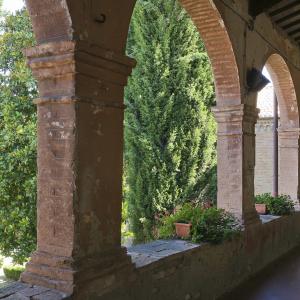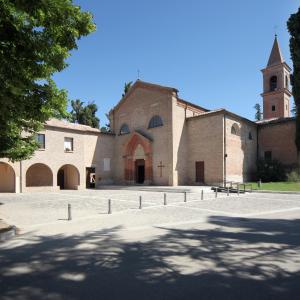The sacred places of Saint Francis
An itinerary among the places of Romagna touched by Saint Francis, where the Saint had the chance to stop, pass by, and where he also performed some miracles: places of great charm suitable for meditation, which are almost always located in positions of great scenic beauty and in isolation, which favors prayer and contact with nature.
The departure is from the Covignano hill, just outside Rimini, where the Franciscan sanctuary of Santa Maria delle Grazie is located; it was built in the fourteenth century in the woods that then covered the hill. It can be reached comfortably by car, but it is advisable to take the small road of the Via Crucis which, starting from Via Covignano, reaches the churchyard where it is possible to admire a splendid view of the town and the sea. In this place a primitive chapel was built in 1290 on the spot where, according to tradition, four years earlier a shepherd boy supposedly carved an image of the Madonna in a tree trunk, which was completed by the angels, who rushed to remedy the inexperience of the improvised sculptor.
Moving towards the historic center of Rimini we come across the Sanctuary of Saint Anthony of Padova. It is the church of the Minims Order of Saint Frances of Paola or of the Paolotti, which was rebuilt on the remains of the previous baroque church. Of particular importance are the frescoes that decorate the interior of the church, which depict some of the most famous miracles performed by Saint Anthony from Padova at Rimini and the miracle of Saint Frances from Paola, who crossed the Strait of Messina on his cloak.
The third stage takes us to the valley at the foot of San Leo, in the locality of Sant’Igne, where there is a small convent located in a secluded and beautiful place, with green scenes and slightly undulating meadows in the background. The convent extends around a modest-sized cloister dominated by the bell gable of the church next to it, dedicated to the Madonna. This church, consecrated in 1244, has a single nave with a short transept, in the right-hand part of which a segment of the trunk of an elm tree is preserved, a tree under which Francis is said to have preached.
We then head on to Sant'Agata Feltria where there is the female monastery of Santa Maria Maddalena, the Poor Sisters of Saint Clare, the Poor Clares. The building dates back to the period 1200-1300, with an adjoining Romanesque church of 1100-1200 dedicated to Saint Mary Magdalene. The Poor Clares have lived there since 1561, when a landslide destroyed the town of Saint Agata, and later they found hospitality in a building donated by the Marquises Fregoso.
The seventeenth-century convent of the Capuchin Friars with the adjoining church of the Blessed Virgin, Mary Immaculate, rebuilt in 1856 on a building dating back to 1654, is still on the hill of Santarcangelo di Romagna. The convent was suppressed by order of the Napoleonic government but it was then bought by Count Antonio Baldini, who demolished the old church, rebuilt in 1852, when the Capuchin Friars took possession of the monastery.
Finally, the last stage takes us to Verucchio to admire the Convent of Santa Croce, the oldest Franciscan building in Romagna. This building stands on the place where St. Francis of Assisi, according to tradition, planted his walking-stick, around which roots and leaves grew. A gigantic cypress tree grew from it, more than seven centuries old, still visible in the cloister.



